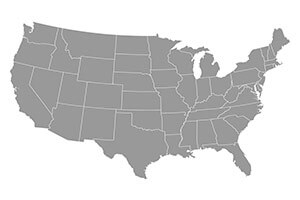
Honey crops in the southern U.S. have generally been better than last season with some notable exceptions pointed out by our reporters who live in locations hit with earlier unsettled weather and excessive rains that were then followed by excessive heat and humidity later in the summer. Beekeepers were hoping that late summer and fall flowers would have enough remaining ground moisture to produce late honey crops or least provide for winter stores. Similarly, in the northern states spring weather was often stormy, but later in the season many states had a period of very dry, hot weather which at times put a strain on wildflowers, clover and alfalfa. The big honey production states of Minnesota, North and South Dakota had good amounts of moisture earlier in the spring and beekeepers were hopeful that this would lead to better clover and alfalfa flows during their honey flows. Farther west into the Intermountain states conditions were becoming drier, but some beekeepers indicated that they were able to make fair to good honey crops before conditions became excessively dry. In the West, California beekeepers are again fighting drought conditions and wildfires. However, honey crop reports were better in Northern California, Oregon and Washington.
Beekeepers continue to indicate good local honey sales, but commercial beekeepers were still competing against lower priced foreign honey, which was dragging down large-lot bulk honey prices.
NORTHEAST
Honey flows have been fair to excellent, depending on rainfall and days of good foraging weather. Ground moisture has generally been satisfactory to take plant growth through the main part of the season. However, some locations were getting a little on the dry side which could affect the big goldenrod, Japanese knotweed and fall flower flows. These late flows often provide nice honey surpluses for beekeepers in this area. Fall flows should be well underway in late August and September. Honey flows that were mentioned earlier in the season included clover, locust, alfalfa, sumac, honeysuckle, vetch, privet, milkweed and autumn olive. Many beekeepers removed and extracted their lighter spring and summer honey crops before the late summer and fall flows began. Local honey demand remains excellent, but those beekeepers in competition with bulk quantities of foreign honey are seeing declining price offerings. Some beekeepers were skipping fall flows in favor of timely varroa mite treatments, but others were using varroa control products like Mite Away Quick Strips and HopGuard that allow supers to remain on hives during the treatment period.
MIDEAST
Beekeepers said sourwood honey flows in North Carolina were better in the mountains than in the Piedmont area. Earlier flow reports about black locust, sumac, thistle, blackberries, basswood, tulip-poplar and assorted wildflowers were mixed. The May flows were hurt by rainy weather, but then June and July were much drier and warmer, so bees had more foraging days. The eastern part of Tennessee had average to excellent flows, but too much rain earlier in the season hurt honey flows from sumac, clover and sourwood in the western half of the state. In Kentucky clover flows were fair to good, but the basswood and wildflower flows were disappointing. Earlier spring wildflower and black locust flows were hurt by cool, rainy weather, but later clover honey flows were better in West Virginia and Virginia.
As this was written, beekeepers were taking off surplus honey and extracting. Mite controls will be added at the same time in order to achieve maximum mite control. Despite widespread news about a declining wholesale honey market, most of our reporters felt that they would not be affected significantly, if at all, because they sell most of their honey through local sales outlets, often directly to the consumer.
SOUTHEAST
Honey crop reports from Alabama, Georgia and Mississippi have been fair to good, although some locations suffered due to erratic weather, including too much rain. Honey flows mentioned included clover, crepe myrtle, mimosa, pepper vine, red vines, as well as assorted wildflowers and privet earlier this spring. Tallow flows were also generally good along the Gulf Coast. In Georgia colonies received earlier fair to good flows from wildflowers, clover, tallow, gallberry and palmetto. Later flows looked encouraging from cotton, soybeans and sunflowers. Tupelo honey flows were somewhat disappointing. Beekeepers had also moved colonies into the northern mountains for sourwood flows which were fair.
Honey crops in Florida were better than last season, but still down considerably from what many beekeepers felt were normal. While some beekeepers claimed their best flow came from orange groves, others said tallow or wildflowers provided their best flows. Gallberry, tupelo and palmetto flows were generally rated as only fair to poor, depending on one’s location. Erratic weather and frequent rain storms were blamed for poor yields by some beekeepers. Beekeepers were crowding into Brazilian pepper locations in preparation for this major flow. Some reporters were worried that …
…


